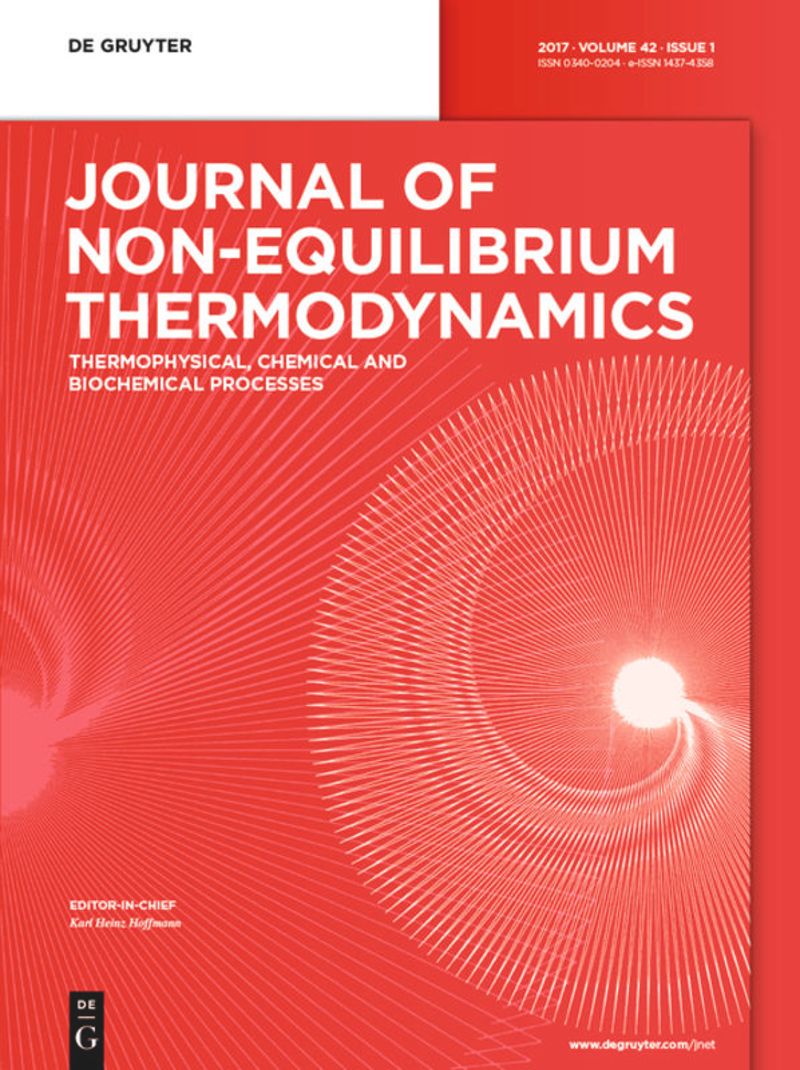纳米颗粒直径和拉伸片纳米层对微极流体热对流传热的影响:灵敏度分析方法
IF 4.3
3区 工程技术
Q1 MECHANICS
引用次数: 11
摘要
摘要所提出的研究证明了磁化拉伸片诱导的辐射纳米流体流动的流动现象和热变化。通过结合响应面方法,优化了纳米流体热对流的传热速率。石墨烯纳米材料用于水性纳米流体中。动态磁场、热辐射和Cattaneo–Christov热通量模型已用于表示纳米流体的热行为。该模拟利用了纳米材料的热导率和粘度的实验估计值。为了进一步揭示流动的热增强,在分子水平上提出了纳米颗粒直径和固液界面层的影响。响应面方法和灵敏度分析已用于从统计学上检查纳米颗粒体积分数、Biot数和磁性参数对传热速率的影响。通过执行适当的相似性变换,由控制偏微分方程形成一组方程。bvp4c方法用于数值求解该问题。通过表格、图表和表面图显示了各种参数对传热、传质和局部努塞尔数的影响。研究发现,随着Biot数的增加,浓度和温度分布也会增加。目前的解决方案和以前存在的解决方案之间的一个极好的一致性是确定所取得的结果的有效性。本文章由计算机程序翻译,如有差异,请以英文原文为准。
The optimization of heat transfer in thermally convective micropolar-based nanofluid flow by the influence of nanoparticle’s diameter and nanolayer via stretching sheet: sensitivity analysis approach
Abstract The proposed study demonstrates the flow phenomenon and thermo-variation of a magnetized stretching sheet induced-radiative nanofluid flow. By incorporating the response surface methodology, the heat transfer rate of the thermally convective flow of nanofluid is optimized. The graphene nanomaterial is used in the water-based nanofluid. A dynamic magnetic field, thermal radiation, and the Cattaneo–Christov heat flux model have used to represent the thermal behavior of the nanofluid. The simulation utilizes experimentally estimated values for the nanomaterial’s thermal conductivity and viscosity. To further reveal the thermal enhancement of the flow, the impact of nanoparticle diameter and the solid-liquid interfacial layer is proposed at the molecular level. The response surface methodology and the sensitivity analysis has used to examine the effects of the nanoparticle volume fraction, Biot number, and magnetic parameter on the rate of heat transfer statistically. A set of equations is formed from the governing partial differential equations by implementing suitable similarity transformations. The bvp4c approach is used to solve the problem numerically. The effect of various parameters has displayed through tables, graphs, and surface plots on heat transfer, mass transfer, and the local Nusselt number. It is discovered that as the Biot number increases, so does the concentration and temperature profile. An excellent accord between the present and previously existing solutions is establishing the validity of the achieved results.
求助全文
通过发布文献求助,成功后即可免费获取论文全文。
去求助
来源期刊
CiteScore
9.10
自引率
18.20%
发文量
31
审稿时长
1 months
期刊介绍:
The Journal of Non-Equilibrium Thermodynamics serves as an international publication organ for new ideas, insights and results on non-equilibrium phenomena in science, engineering and related natural systems. The central aim of the journal is to provide a bridge between science and engineering and to promote scientific exchange on a) newly observed non-equilibrium phenomena, b) analytic or numeric modeling for their interpretation, c) vanguard methods to describe non-equilibrium phenomena.
Contributions should – among others – present novel approaches to analyzing, modeling and optimizing processes of engineering relevance such as transport processes of mass, momentum and energy, separation of fluid phases, reproduction of living cells, or energy conversion. The journal is particularly interested in contributions which add to the basic understanding of non-equilibrium phenomena in science and engineering, with systems of interest ranging from the macro- to the nano-level.
The Journal of Non-Equilibrium Thermodynamics has recently expanded its scope to place new emphasis on theoretical and experimental investigations of non-equilibrium phenomena in thermophysical, chemical, biochemical and abstract model systems of engineering relevance. We are therefore pleased to invite submissions which present newly observed non-equilibrium phenomena, analytic or fuzzy models for their interpretation, or new methods for their description.

 求助内容:
求助内容: 应助结果提醒方式:
应助结果提醒方式:


